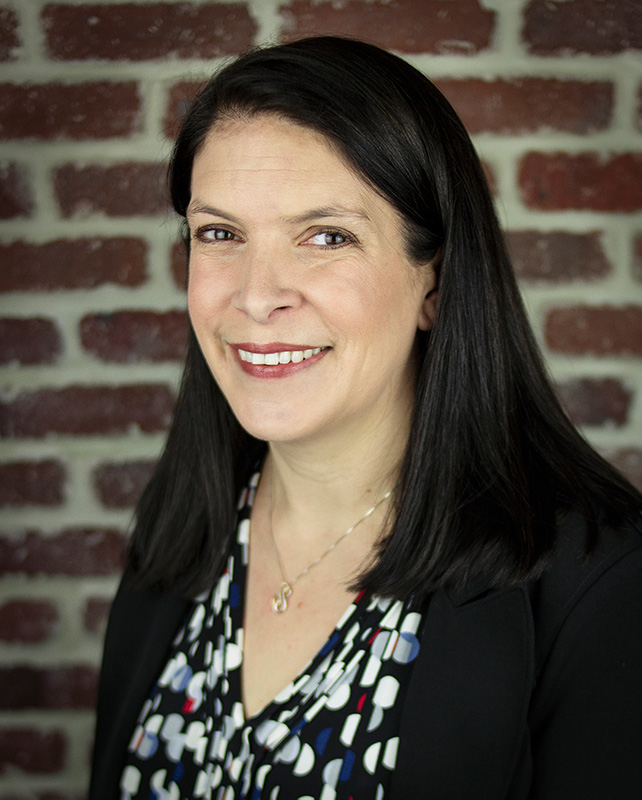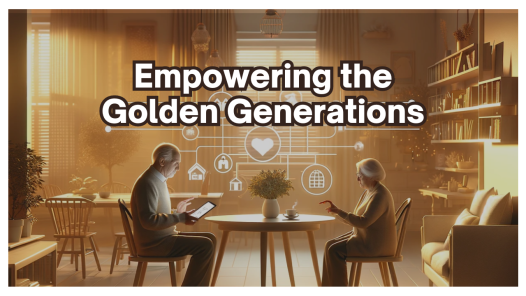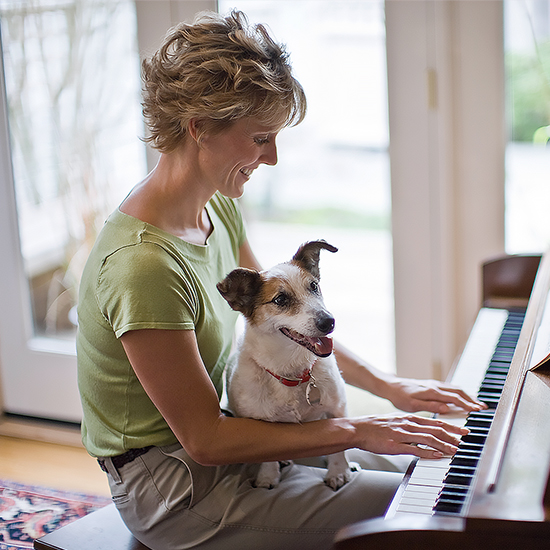
Kim Radaker Bays is the Principal Managing Partner at Exponential Property Group. It is a fully licensed Real Estate Brokerage in the State of Texas. (TREC License number 9001260) EXPPG is an important piece of the Exponential Property Group of Companies as it allows the managers to deal directly with other brokers, saving time and hassles. Having an in-house brokerage firm creates additional value to investors as a portion of the commissions received are frequently rebated directly back to the project on both the purchase and sales sides, which drastically reduces expensive transactional and closing costs. Exponential Property Group provides brokerage services to third party investment groups who are interested in being represented by a broker team that specializes in B & C Class multifamily assets in the Texas market. Their excellent reputation with the close-knit broker community has paid off, in that they are able to provide their clients with timely information on available properties and off-market deals. And since they scrutinize all offers with increased interest and seriousness, their clients’ offers have a better success rate for acceptance.
Hanh Brown: [00:00:00] Hi Kim, thank you so much for being here. So please tell us about your story and how you get started in this business.
Kim Radaker Bays: [00:01:37] Sure. It’s actually kind of a funny story. I was working in the retirement plan field, and so kind of had a finance background, but one day I was going to the grocery store and the Rangers game that I was listening to when, on rain delay and they put on real estate investor radio show as a replay during the rain delay.
[00:01:59] And so I listened for a little bit and heard their recommended book list. And so one of the things they recommended reading was rich dad, poor dad. And so I went and got it from the library, read it, I don’t know, five or six hours. And like, okay, this seems like something that I should really look into. So went to the free seminar thing that this real estate group had. [00:02:22] And so got more information there. And decided, you know, for $500, all I find out is that I don’t ever want to deal with all this real estate stuff. At least I’ll wake up when I’m 70 and know that I looked into it and it wasn’t for me and took a bit of a different path than that. So started actually in single family. [00:02:40] And in the first year that we were involved with this real estate group, but seven single family homes. Based on certain lending things and whatever, this was in 2007. So before any of the market crashed, but still I was self-employed. And so in order to. Getting some of the loans on the houses was a bit complicated. [00:03:01] And so we actually paid cash for the houses, then did the renovation and then put the mortgages on afterwards. And that proved to be a great thing because it got a lot of the money back out of the houses in order to allow us to buy more. So we were able to buy seven and got all of those refinance. The seventh one got the refinance done about three days before Countrywide shut down their cash out program. [00:03:28] And that was pretty much the last game in town as, as 2008 was so booming time, a great opportunity, the local market and multifamily as well. Absolutely. So that was the kind of the single family piece of it. At the time, my kids were really little, they were about six months old. When I joined the investor group, they spent their first Halloween in a title office, signing paperwork on the first rental house. [00:03:55] And we’re about one and a half, I guess, by the time almost two, by the time we were done with the single family rentals. And so it was getting a lot harder to bring them into. No messed up houses with no flooring and that sort of thing. Cause they wouldn’t just stay put like they would when they were little. [00:04:12] So it took a little bit of time off and just manage the seven rentals that we had. And then about two years after that, I was talking to another mom at school that they were going to and she asked what I did and I told her real head rental houses and whatever. And she said that her husband was in real estate too. [00:04:30] And so I actually met him and his background had all been. Flipping houses out in California and then a little bit in North Texas. And so we spent an afternoon at the Starbucks where I was trying to get some flip knowledge, to get a little bit deeper capital stack to work with. And he was trying to get some rental knowledge to figure out how to get some cashflow. [00:04:49] And we decided to join forces and look apartments. And so in 2011, we bought our first property, which was a 77 unit property. And. Was about 68% occupied at the time that we bought it, we managed to renovate it, raise rents, lease it up and sold that one for 136% gain in 15 months. And so from there just 10 31 into the next one, which was a 244 unit property. [00:05:20] The year after that, we bought a 444 unit property. And then it’s just been growing from there. So at this point, inception to date, we’ve acquired over 7,200 units. They currently own a little over 4,800 now. So we’ve purchased 20 properties and have sold six of those and have 14 currently. So everything has really grown exponentially, which I guess is just desserts for naming the company, exponential property group.Hanh Brown: [00:05:45] Real estate can be an alternative for those who are not able to withstand the volatility of the stock market. It’s also a better investment for those investors who wish to take
[00:05:56] an active role in growing their capital, rather than passively putting their money into a fund to be managed by someone else. [00:06:04] Rental property investing is the preferred investment strategy for those investors who want an additional source of monthly income along with slow, but steady appreciation in the value of their portfolio. The first investors group that you joined, Kim, did that ignite your interest and catapulted your success. [00:06:25] And what was the progression after that group?Kim Radaker Bays: [00:06:28] I think so. I think that’s definitely where it started from. So all of our initial investors were from that group, but then as we’ve kind of moved on from that group, because it’s targeted a little bit more towards smaller operations than what we have grown into.
[00:06:42] So once we kind of left that group and didn’t have any of the restrictions that they imposed on it now, in addition to all of those investors that we were working with before we also have most of their brother-in-law’s next door neighbors. Guy down the, you know, three offices down mothers, all of those kinds of things. [00:07:01] So a lot of their kids have started to invest. And so it’s really grown a lot since that time. So the first property only had six investors and the 2000 unit portfolio that we bought last summer, I think had about 183. If I remember correctly. Yeah. Lots of smaller investors and. It’s been really, really cool because what we do in addition to making the properties better and giving people a better place to live, as we’ve grown, we’ve really been able to provide a good place for people to work. [00:07:35] And our investors have gotten some really good returns that have enabled them to do things that they wouldn’t otherwise be able to do. Trips on their bucket list or, you know, allowing their kids to go to college and paying for it so that they can graduate without student loan debt. It’s been a cool process to watch.Hanh Brown: [00:07:54] Passive ownership of commercial multifamily real estate can be a great way to create stable streams of passive income.
[00:08:01] You can invest in multifamily real estate, either actively or passively active ownership is almost synonymous to being a landlord. More. So in the residential rental ownership [00:08:14] for people that want to be investors, not landlord, then passive investing is probably a better fit as a passive investor in a multifamily real estate syndication. [00:08:27] You partner with a stellar team that has a strong track record, [00:08:31] invest your money in a prime piece of multifamily real estate that generates high return all while you expend minimal effort. So Kim tell us about may no Cedar Creek. Do you have a lot of experience in this neighborhood? Tell us why there was an exchange of ownership. [00:08:49] And the impact of having a good property management in the repositioning.Kim Radaker Bays: [00:08:54] Yeah. Montecito Creek was the one that we bought last Monday and it’s 650 units in Dallas. It’s in an area that we are pretty familiar with. We’ve owned another property. That was about a mile South of there and several others that are a few miles to the West.
[00:09:11] And so it’s an area that we have a lot of experience in. This property needed quite a bit around innovation. It had been purchased about three years ago by a group. That’s great, but they didn’t hire the right management company on the first go round. And so property really slipped. So they did some renovations, but never what they intended to do on the project because the occupancy had dropped so much, so that cut into some cashflow and created some additional issues. [00:09:40] And by the time we bought it, That switched management companies and it was on its way, but the partners had decided to split up their partnership. And so that was the primary reason that they were selling men. And it gave us a really good opportunity because a lot of the renovation that they had intended to do, didn’t get done. [00:10:00] And there was still a lot of management correction that could be done as well.Hanh Brown: [00:10:05] For those without expertise, nor time passive ownership of real estate can allow you to invest successfully. In multifamily apartments, you can leverage the specialized knowledge of a sponsor, syndicator and invest alongside with them passively
[00:10:21] this way you can ensure the benefits of direct ownership without the responsibilities of management.[00:10:28] You get their percentage ownership of the cashflow, the tax benefit, the appreciation and the emiratisation. [00:10:36] The goal of passive investor is to create stable streams of passive income while you’re asleep and to grow equity without the headaches of management. So, Kim, I see that working with a credible team and earning a reputation that you are a closer, all are key in getting your offers accepted by brokers and sellers.
Kim Radaker Bays: [00:10:57] Well, I think a lot of the time we’re really able to get offers accepted over other groups, just because we have a proven track record of doing what we say we will do when we offer a price, we don’t go back and retrade and cause hassles and argue over silly things. So we’re pretty easy to work with on the transaction side.
[00:11:18] And so I think that makes a big difference in this particular case, it was sort of an interesting story while we were in the best and final section. Of the kind of contract and offering period, there was conference locally. And I ended up being on a panel with the seller, one of the two partners that was selling the property. [00:11:41] So we actually got to know each other a bit that day and then have gotten to know each other better through this whole process and really become friends and. Allies and a whole lot of things. So that’s been a pretty cool experience. So that probably having met him is probably small piece. Why we were able to win out over others as well.Hanh Brown: [00:11:59] In making an offer.
[00:12:00] The investor must make sure there is positive cash flow. The cash on cash return is in the double digits. The deal must have upside potential, which means that they have the ability to raise rents over time and the ability to reduce expenses. They might even have the ability to charge back tenants for utilities. [00:12:19] All of these things are going to increase the net operating income. Also the property must be in a stable growing neighborhood with growing job market. So brokers, when we see being offers, they will know a value offer when they see one. [00:12:35] So Kim, for making your offer, [00:12:38] what were the financials and how much did you have to break?Kim Radaker Bays: [00:12:41] Sure. The range is about 14 and a half million. We were able to get a really favorable 75% loan to cost. For our, from our lender. And we were able to get a fixed rate, even though it is a bridge loan that has a good deal of flexibility to exit anytime after three years. So we got pretty fantastic terms on the lending target.
[00:13:02] When we buy this property is to hit at least a hundred percent gross capital gain at the time of sale, which would be in about three to five years in addition to some cashflow along the way. So we look for properties that because their rents are under market or there’s renovation opportunities or. [00:13:19] Various things that we can cut costs and improve income in order to hit those capital gain targets. And this particular property, like I said, it had had quite a few occupancy issues. A lot of that was kind of cleared up by, by the time things closed, but it struggled for a while. And so that definitely impacted a bit what the price was that we paid for it. [00:13:42] And then also kind of what our process is for working through the financials. You gotta be on it.Hanh Brown: [00:13:49] for most people are familiar with earned income. It is the income you derive from working at a job or owning a business earned income is highly taxed and even more costly, you have to trade in your time to get it.
[00:14:05] An average worker traits about 40 hours a week, 50 weeks a year. And does this for about 30 plus years in exchange for an income [00:14:13] with highly tax dollars. [00:14:15] Passive income is very different. It is to buy from only one of two sources. It is from trade or business activity that you do not materially participate in or from rentals. [00:14:29] Kim is a successful multifamily syndicator operator who now has generated passive income for her investors. And for herself once she repositioned the asset. So Kim, please share with us your in-house management team.Kim Radaker Bays: [00:14:45] We do, we use external contractors for the exteriors of the property because they’re artists, so many good groups that play in that space, but we’ve always had a difficult time finding.
[00:14:58] Groups that really could manage the interior upgrades. Well, and so years ago we brought that all in house. And so we have over 30 members on our rehab team that are direct employees of ours and go from site to site and work on the upgrades. You know, adding granite, if necessary glass tile, backsplashes replacing the light fixtures, really kind of cleaning things up and giving people a fresh new. [00:15:24] Place to live, even though it’s a, oftentimes in 1980s built property.Hanh Brown: [00:15:30] Okay. What kind of upgrades are you doing?
Kim Radaker Bays: [00:15:34] Well, I mean, it, it really depends the square footages. Some of them are, you know, 500. Some of them are 1300. So obviously costs range quite a bit when we, depending on the size, but typically speaking, we’re putting in all new vinyl plank flooring throughout the property, sometimes adding granite, depending on exactly what sub market that property is in and whether we want to do kind of a premium upgrade on it or not all new door hardware, all new light fixtures, adding ceiling fans to the bedrooms.
[00:16:05] If they’re not there. Sometimes replacing electrical panels. If any of them have federal Pacific panels, sometimes resurfacing the tub, but oftentimes replacing the tub and the tile and the surround. So that gives a whole lot longer longevity moving forward replaced. Obviously the vanity lights, all the faucets put in new toilets for water conservation, you know, new FOA wood blinds, glass tile back splash. [00:16:32] It really looks sharp when it’s all done.Hanh Brown: [00:16:35] What if the classification of the community and the neighborhood.
Kim Radaker Bays: [00:16:41] it’s probably BB minus location. I would say kind of, not just a little bit West of Garland, a little North of Mesquite. So, I mean, it’s an, a decent area, but certainly not anything fancy, definitely workforce housing type project, but even workforce housing really.
[00:17:03] Wants a nice place to live in somewhere they can be proud of and have friends and family over and have my surroundings.Hanh Brown: [00:17:10] Oh, absolutely.
[00:17:11] Yup. So how much rent, I guess, are you looking to increase in your 1300 square feet or 700 square feet?Kim Radaker Bays: [00:17:16] So typically speaking, we would get without granted and without new cabinets, usually about a hundred dollars more per month for the one bedrooms.
[00:17:31] Then for two and three bedrooms, it can easily get to be 125, one 50, even sometimes 200, depending on the size and the market and what’s going on there and kind of, if we go for a more premium thing, and usually that costs us between about 30 508,000, and that’s including new stainless steel appliances and the flooring throughout. [00:17:55] Okay. So we do have, we have some pretty significant cost savings by having the renovation crude on in-house. And also probably the biggest cost savings is that years ago, when we bought the second property, it was only 50% occupied. And so we had to renovate a ton of it all at once. And we realized we were going to need 200,000 square feet of vinyl plank flooring. [00:18:16] And so we actually went with one of our investors. That’s Chinese national over to China. And started sourcing our own materials. And so at this point we also have the materials import business that sells both to our properties and also other people’s properties. But we pass through a lot of the savings to the properties that we have. [00:18:36] So we’re able to renovate for less because of that value add import. So we import all of the light fixtures and the Tylenol, and a lot of those things that I was describing.Hanh Brown: [00:18:46] would make sense.
Kim Radaker Bays: [00:18:48] I mean, it definitely can make sense. It’s getting all the logistics and the supply chain figured out and finding the right vendors and things.
[00:18:54] It’s definitely a process to do that, but there are definitely some good savings that can be had by doing it. And then we also do sell, like I said to other investors. So there’s a lot of other groups, both in town and a few nationwide that will buy from us and we do kit boxes. So you get one box that has everything you need from the ceiling fans. [00:19:16] Faucets. Everything is in one box. You can just take that box to the unit, very have the counts for clients’ properties and have everything all in one place. So we already know if you ask for an, a one box that, you know, this is the number of cabinet poles that need to be in there. And so we’ve gotten that kind of all figured out now. [00:19:34] And so that’s been a good way for some of the other people in the area to save money, not obviously as much money as if you are doing it all yourself. There is still obviously some markup. To support that business, but that’s been a big value added help for a lot of our other customers and other investors in the market as well.Hanh Brown: [00:19:56] The difference between earned income and passive income is that with passive income, you don’t have to trade time for money.
[00:20:05] You can earn money while you are at your kid’s game or having dinner, or while you are sleeping. [00:20:10] Passive income. Isn’t you working for money instead? It is your money working for you,If you create enough recurring [00:20:20] passive income to cover your monthly expenses, then you are financially free and can spend your time. As you see fit. Are you managing third party property.Kim Radaker Bays: [00:20:32] At the moment, we’re not doing any third party. At some point we may consider it. We would obviously be very selective about what owners we want to work with because it’s very important to me that our staff is treated very well.
[00:20:45] And so making sure that I’m on the same page with ownership, if we were to ever do third-party management would be very important to me. Because I don’t ever want certain, some of our employees to feel like second class citizens, if they’re at a third party property, instead of the one, one of the ones that we own. [00:21:02] But you know, that’s a bit is something that we’ll look into in the future. I’m sure. Basically we started the management company from the very beginning and you know, it’s been a little tempting from time to time to go third party management. My former partner was definitely more of that mindset, but for me, I just really liked having the visibility and control and being able to make small changes before you end up in big problems. [00:21:31] And so having it in-house and having people that I know and trust at all different levels has made a big difference. It gives us a lot of visibility because we have access to all the software. Sometimes that’s a little more limited, a third party arrangement and. It allows us to make small changes. Like on occasion, you have to find better maintenance tech or various things, but without having to entirely change management companies, which could mean changing software and bank accounts and all kinds of other things that makes sense. [00:22:08] It’s been a huge difference to have it in house and really. Be able to be hands-on whenever needed.Hanh Brown: [00:22:16] So are you using software to screen tenants and how are you tapping into social media?
Kim Radaker Bays: [00:22:23] Some software that’s for the screening. We have Natasha, my director of operations is just amazing and she loves the marketing side, the finance side as much more my side.
[00:22:32] And so that made us a great team years ago when she came and joined us. It was like, it was a good split of duties as far as me getting to spend most of my time on the spreadsheets and her getting to spend more of her time on marketing ideas and whatever else. But we do have a lot of different marketing that we do. [00:22:49] We do some through some of the bigger websites. We’ve also done some keyword marketing for different sources, and we also do a lot of kind of grassroots in the community. Make sure we’re meeting with employers that are nearby. Getting referrals from local businesses, places that our residents would shop or eat or whatever, we try to really have good connections there. [00:23:16] And that gets us a lot of word of mouth as well.Hanh Brown: [00:23:20] That’s awesome. What has been your greatest success
[00:23:24] and setbacks and what did you learn from it?Kim Radaker Bays: [00:23:27] There’s been a lot of, a lot of pretty cool successes. We’ve grown from two employees back in 2011 to over a hundred. Yeah, 60 now. And so it’s been a pretty amazing journey and we’ve grown our investor base from six people on the first project to now across all the different projects, probably 360 or so unique investors.
[00:23:50] And so. Really getting to meet so many cool people and interact with so many people has really been probably the greatest success of all of it. And then setbacks. I mean, there’s always little stumbling blocks along things, you know, there’s some deals that you don’t win, even though you wanted to, but I’ve always kind of looked at those, you know, just roll off and move on from it quickly because that obviously wasn’t the one we were supposed to have and we’ve, we’ve had some awesome projects and awesome things to work on. [00:24:20] Over the years, we’ve really kind of improved a lot of properties and a lot of units. And given a lot of residents, a better place to live some setbacks. I mean, obviously, you know, have more through a few different partnerships, but that’s always been a good thing and everybody’s always gone their own ways as friends, I guess. [00:24:42] It was more, just changes in what we want to do to do once we got to a certain place. So my former partner just wanted to spend time being a bit more retired at a much younger age than what I was looking for. So we’re still very close friends and, you know, do various things together and he’s still invested in my projects, but just at a different different level than before this past year has been a really interesting one. [00:25:08] We went from. Right around the 2000 unit Mark where we had been for a year or so. And moved out to where now we’re over 4,000, almost almost 5,000. So it’s really doubled in size. In the past year. Last April, we had 80 employees. Now we have 160. And so the biggest struggle that we have right now, and it’s just something that we’re working through and paying really diligent attention to is making sure that everything that everybody’s going in the same direction that everybody is growing in the same direction and that. [00:25:42] Everybody at all levels throughout the company knows what we’re about, why we’re here, what we’re trying to get done and understands the care that I have for all of them. Even though we’ve now grown to a place where there’s a lot of times that I can’t see everybody frequently. So those that’s probably the biggest struggle at the moment. [00:26:01] And it’s just something that we work through and learn some new skills and rituals and processes. Some of the processes that work really, really well when. You only had to do it for three properties. Don’t work as well when you have to do it for 14. So it’s just a constant growth and learning opportunity.Hanh Brown: [00:26:19] The real estate market intimately, and being able to correctly identify the face. Each market is currently in is key to recognizing what is a good investment versus what’s to pass on. So where do you see us relative to recovery expansion, hyper supply and recession.
Kim Radaker Bays: [00:26:38] Prices are certainly high. I don’t think we’re going to continue to see like really higher prices and at least not anymore cap rate compression probably would be my general guess, but at the same time, the fundamentals still steam, very strong, especially here in DFW job.
[00:27:00] Market’s so great. There’s still businesses moving here all the time. And so while I know it’s late in the cycle and everybody wants to talk about what inning are we in. Most of the fundamentals around here are still very strong. And so I’m sure it will end at some point, but I’m not sure really when, and I think probably the biggest risk that I see upcoming is just going to be elections in 2020. [00:27:27] And how that impacts the market. Always possible that the stock market could have some sort of a crash and makes everybody a little bit nervous and impacts. Real estate to some degree, but overall real estate is a very forgiving business, as long as you’re a bit careful with how you buy it and careful with how you finance it so that you make sure as long as you have cash flow time will cure a whole lot of things. [00:27:52] So that’s the biggest thing is always make sure that while I am going after value, add projects, to make sure that there’s going to be enough cash flow, that things can be. Not great for a little while and still have cash flows that you just wait it out and get to the other side and then things will continue growing again.Hanh Brown: [00:28:11] It’s great advice. What would you say to investors who are DIYing into this?
Kim Radaker Bays: [00:28:17] Really get to know the market. You have to be careful. There’s some very good deals out there, but you have to dig for those quite a bit. And so you need to be a little bit careful. To not go after something that isn’t going to work, make sure you really pay attention to your numbers.
[00:28:33] Other things is, I don’t know if this is true in other parts of the country or not, but certainly here in Texas buyers need to be prepared for the fact that most good deals are going to have heart earnest money day one. And the big thing is you have to build your reputation. So especially on that first one or two deals, the reputation has been really valuable to us. [00:28:55] And so my biggest advice to somebody that’s just buying a property for the first time is if you figure out there’s, you know, an extra $10,000 expense that you weren’t planning on because a building needs foundation work or something like that, I’d probably just. Hope that you’ve got room in your numbers and managed to make it work because the people that I have seen that kind of Retraded and tried to negotiate the price after contract in this market. [00:29:20] Recently, everybody finds that out. Pretty quickly, and it becomes very difficult to get deals going forward unless you’re really overpaying for them. So I think that’s the biggest thing is just make sure that whatever you agree to do that you follow through on it, because that’s going to make a big difference in terms of your reputation and your ability to get projects. [00:29:39] When there is so much competition,Hanh Brown: [00:29:42] credibility, reputation, relationships are all huge in this business. What has real estate allow you to do for your family’s future?
Kim Radaker Bays: [00:29:53] I mean, really it’s been a huge impact in terms of what we’re able to do. I have twin boys that both have autism. And so this business has given us the funds available to get into the best school district and cover private things and various things.
[00:30:11] As time went on that we weren’t able, that we would not have been able to do. Otherwise. Obviously this business does take a lot of time. So that can be difficult. Sometimes it’s a little hard to get away and spend as much time with the kids as I’d like to, but it really has made a big difference in terms of what we’re able to do. [00:30:30] Unfortunately, it’s a pretty flexible business as well. So even though it does take a lot of hours, Especially when they were little, I was able to really move shuffle stuff around so that, you know, some of the work hours that I did were after they went to sleep at night or those sorts of things, and that I worked from home for a good chunk of my career as I’ve been building this business.Hanh Brown: [00:30:52] So what do you look forward to in 2019?
Kim Radaker Bays: [00:30:55] We are still continuing to evaluate opportunities and looking at properties. There’s a lot of stuff there that isn’t particularly good deals in our opinion, or at least doesn’t fit our box very well at the moment, but there are still some things that look somewhat promising.
[00:31:09] So we’re just continuing to buy, but being careful in what we buy.Hanh Brown: [00:31:15] how can listeners learn more about your business?
Kim Radaker Bays: [00:31:18] They can send an email and request to be put on our list for future offerings. My email is K I M E X P P.com
[00:31:27] So Kim IEX ppg.com, which is short for exponential property group. And we can get I’ll put them in touch with Amanda, who is our investor services person and handles all that can get them set up on our investor portal so that they will know about future offerings. [00:31:44] Obviously. Historically with mostly identify with six B offering. So it is, they would need to kind of build a relationship with us. We need to get to know them a little bit in order to include them on the investor list. At least for those offerings, unless we decided to do a five Oh six C, which then would allow more broader marketing at some point in the future.Hanh Brown: [00:32:03] Utilizing passive investment in commercial multi-family real estate is a viable, proven way to invest in real estate without having to become a landlord.
[00:32:14] You can leverage professional expertise [00:32:18] to create stable streams of tax advantage, passive income, so that you can buy back your time from work so that you can do the things in life that matters to you the most. And that’s what makes passive income truly priceless. Thank you so much, Kim. Appreciate the opportunity and other fortune next time. Thank youYou can follow Kim on LinkedIn at https://www.linkedin.com/in/kimberly-radaker-bays-b46696b/













